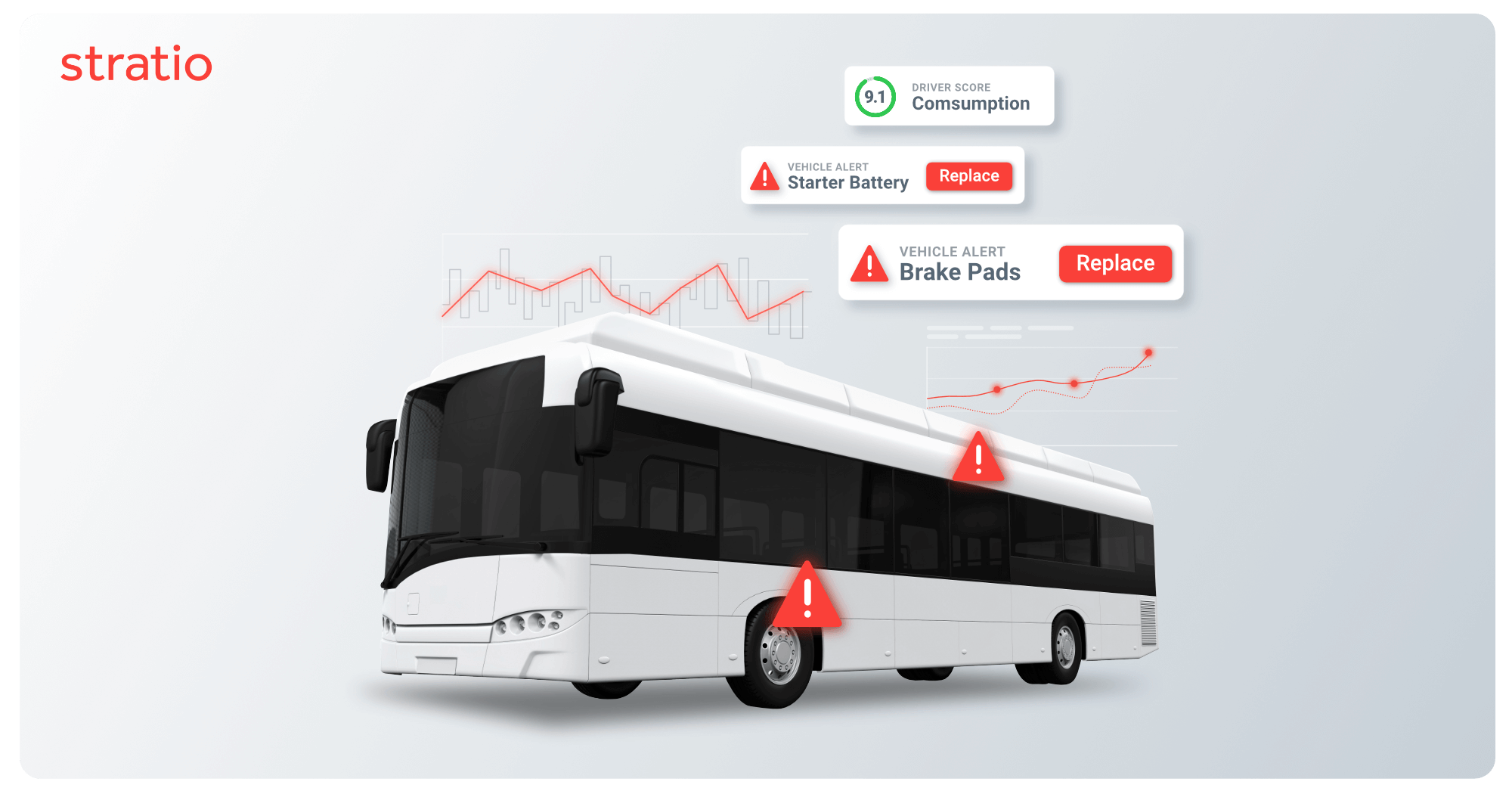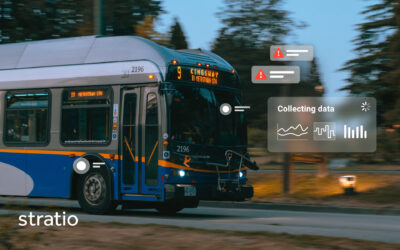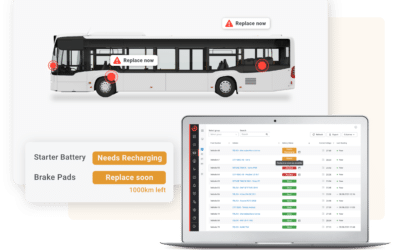In our previous part 1, we answered some of the most common FAQs regarding predictive maintenance for transport operators and the challenges of implementing this approach.
Follow along for part two of our series, as we delve deeper into topics such as predictive maintenance data collection capabilities, fault predictions, and the differences between this maintenance approach and predictive battery analytics. By the end of this article, you will have a better understanding of what you can expect from predictive maintenance and will be able to evaluate whether this is the right solution for your company’s needs.
1. Can predictive maintenance collect data from all vehicles, regardless of brand, model, and age?
Yes and no. The most advanced predictive maintenance solutions for public transport are able to collect data from vehicles from different brands, although the specific data that can be collected may vary depending on the brand of the vehicle and the type of data that it is capable of transmitting.
Some solutions to collect data from vehicles can use a standardised protocol, such as OBD-II (On-Board Diagnostics), to collect it from a variety of vehicles, while others may use a proprietary interface specific to a particular brand.
It’s important to note that some older vehicles may not be equipped with the sensors and electronic systems required to transmit the data needed for predictive maintenance and, in these cases, it’s sometimes possible to install additional hardware to collect some data that can be used for predictive maintenance.
In general, a predictive maintenance solution that can collect data from a variety of vehicles is more flexible and cost-effective than a solution that’s limited to a specific brand or type of vehicle, as it allows the solution to be used with a wider range of vehicles, without the need to purchase or install additional hardware.
2. How is data about each component collected from the vehicle?
Predictive maintenance solutions collect vehicle sensor data through various means, including:
- Onboard Diagnostics (OBD) systems: Most modern vehicles have onboard diagnostic systems that monitor various aspects of the vehicle, such as engine performance, transmission, and emissions. Predictive maintenance solutions can access this data through the OBD-II port.
- Telematics systems: Many vehicles now come equipped with telematics systems that provide real-time information on vehicle location, speed, fuel consumption, and other key metrics. Predictive maintenance solutions can access this data through a GPS tracking device installed on the vehicle.
- IoT-enabled devices: Predictive maintenance solutions can use Internet of Things (IoT) devices, such as sensors and gateways, to collect data from various parts of the vehicle, including engine, transmission, and other critical components. This data is transmitted wirelessly to the cloud for analysis.
- Data logs: Predictive maintenance solutions can collect data logs generated by the vehicle’s onboard computer system, including fault codes and performance metrics.
The collected data is analysed using advanced statistical and machine learning algorithms to identify patterns and predict potential component failures in advance. This information can then be used to optimise maintenance schedules and prevent equipment failures, maximising equipment uptime and reducing maintenance costs.
3. Are predictive maintenance solutions equally effective in predicting faults in electric buses?
In general, electric buses can offer more data points for predictive maintenance compared to internal combustion engine (ICE) buses, as they have more complex systems with more sensors.
This can provide greater insights into the health of the vehicle and allow for more accurate predictions. However, it ultimately depends on the specific predictive maintenance system used and the infrastructure supporting it.
EVs have some unique components and systems that need to be monitored, such as the battery, the electric motor, and the charging system. These components and systems may have different failure modes and patterns compared to traditional internal combustion engine vehicles, so it’s important to use predictive maintenance solutions capable of handling these types of data.
However, the majority of the remaining EV components are shared with ICE vehicles, so predictive battery analytics should be integrated within a predictive maintenance solution that can monitor these systems’ performance.
4. Are predictive battery analytics the same as predictive maintenance?
Yes and no. Predictive battery analytics refers to the use of data and machine learning algorithms to predict the health and remaining life of a battery. This type of analytics can help improve battery management and extend the life of the battery by predicting potential failures and scheduling maintenance accordingly.
So, in a way, predictive battery analytics are a component of predictive maintenance specific to electric vehicles. Predictive battery analytics can also help with range predictions. By providing an estimate of how far a bus can travel on a single charge, they enable the efficient planning and scheduling of bus routes.
Often, predictive maintenance solutions with a specific offering for EVs offer insights into metrics such as State of Charge (SoC) and Depth of Discharge (DoD), which can be leveraged by operators to plan charging schedules in a way that extends the life cycle of battery packs and minimises downtime caused by battery depletion. These metrics can also be leveraged to predict problems with the battery or one of its components, allowing maintenance to be scheduled before a problem becomes more severe.
This level of visibility is critical for operators planning a transition to electric buses, which are typically 50% more expensive than traditional ICE ones. With predictive maintenance and predictive battery analytics, operators can keep their EVs on the road for longer and for longer distances, thus accelerating the achievement of cost neutrality.
Extending the life of battery packs further benefits the return on investment for the purchase of electric buses: if the battery pack functions properly for longer, the cost can be spread over a longer period of time.
What’s next?
Access our latest case study with the Keolis Group to find out more about how one of the world leaders in shared mobility, with operations in 14 countries, is leveraging Stratio’s Predictive Maintenance to keep costs low while increasing operational efficiency.
- Route-25 Project: Revolutionising Portugal’s Mobility Sector - September 25, 2024
- 6 Benefits of Implementing a Bus Maintenance Software - April 17, 2024
- Unlocking a more sustainable future with data-powered predictive maintenance - January 15, 2024




